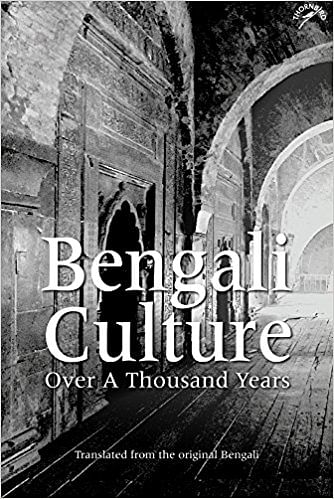
‘Bengali Culture: Over a Thousand Years’ adopts an anthropological approach to examine how the Bengali culture evovled and was impacted by other communities
Reams have been written about Bengali art, language, poetry, literature and society. However, there are perhaps significantly fewer literary works that are able to do justice to these themes, individually and collectively, in a comprehensive and cogent manner. Ghulam Murshid’s Bengali Culture: Over a Thousand Years is such a book that would introduce the reader to various facets of Bengali culture.
Originally written in Bengali, Murshid’s book has been translated to English by Sarbari Sinha. Murshid fans out a huge field of complex ideas related to the history and evolution of being Bengali. But the text flows smoothly, never once overwhelming or intimidating the reader, rather drawing them in steadily and surely. Essentially, a scholarly work since Murshid himself is a scholar, the book succeeds in avoiding an overtly academic tone.
Murshid weaves together and separates wherever necessary, the histories of pre-independence Bengal, West Bengal and Bangladesh. The work is essentially an examination of the changes in the Bengali society and culture through the periods of Mughal and pre-Mughal era, British rule and the various partitions. Adopting an anthropological approach, the larger aim of this text appears to show how Bengalis were not only influenced by changes around them, but also how other communities and their practices impacted the Bengali culture. In providing a thorough examination of the material life of Bengalis, in terms of education, language, religion, architecture, occupation, food, attire and interpersonal relationships, the book offers promising ground for further research.
Browsing through the book, one also gets the sense of Murshid attempting to show that Bengali speaking people are not a monolith or a homogeneous community. Yet he emphasises their shared values and history. Explaining his vision behind the book, Murshid writes that while reading up on the history of Bengal, he observed that most historians had written a partisan as well as a partial history of Bengal. “Bengali society is endlessly divided, the two major stakeholders being Hindus and Muslims. Historians have written either histories of Bengali Hindus or histories of Bengali Muslims, not comprehensive works covering the shared destiny of the entire Bengali speaking people.” Murshid is true to his vision of giving the reader a perspective of Bengal which includes Hindus and Muslims as the primary stakeholders of the Bengali culture.
Even while Murshid writes from a position of viewing the Bengali culture as special and unique, he steers clear of glorifying it, preferring instead to show in equal measure the disturbing, ugly and admirable parts of this culture. Yet, one could also ask whether the intense preoccupation of the Bengali community and culture with itself might be questioned.
Urvashi Sarkar is a freelance journalist based in Mumbai.

COMMENTS